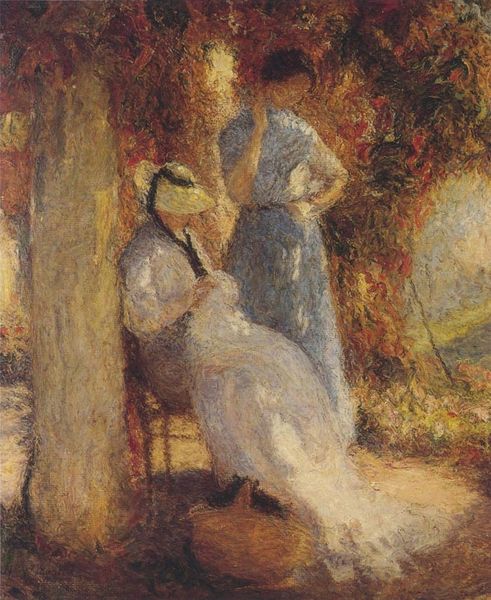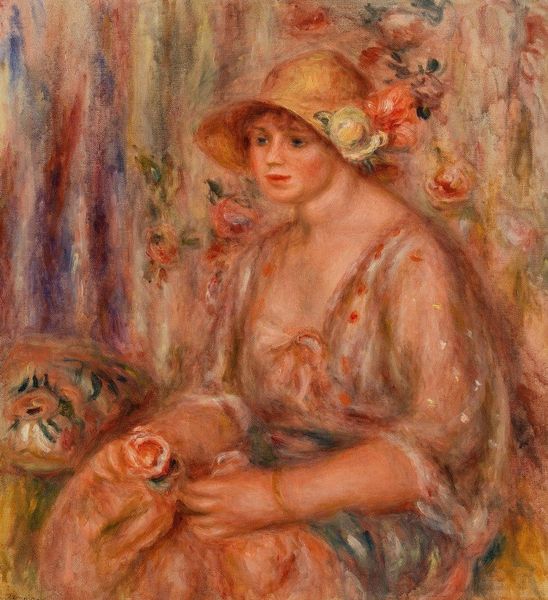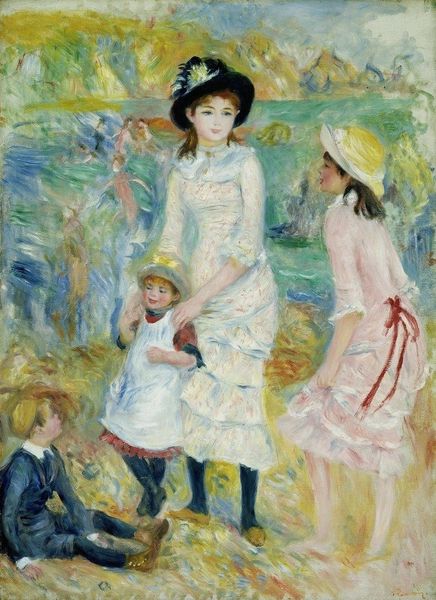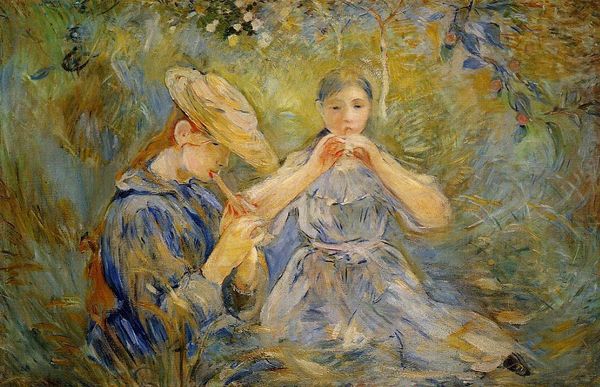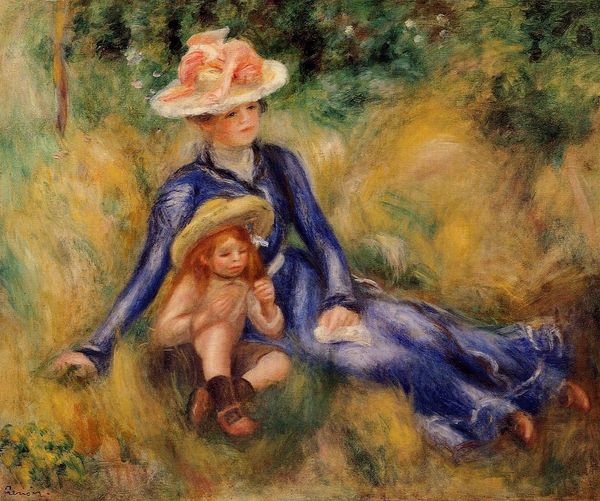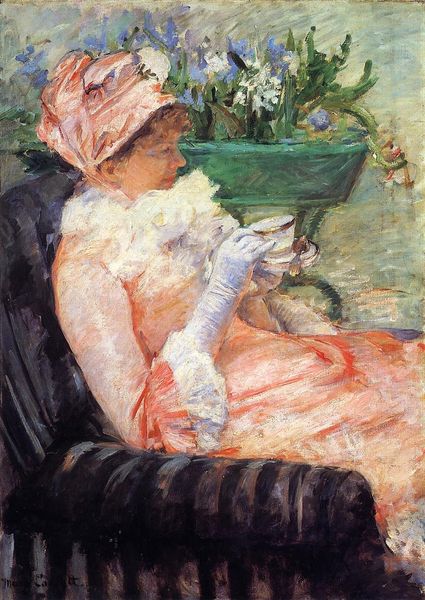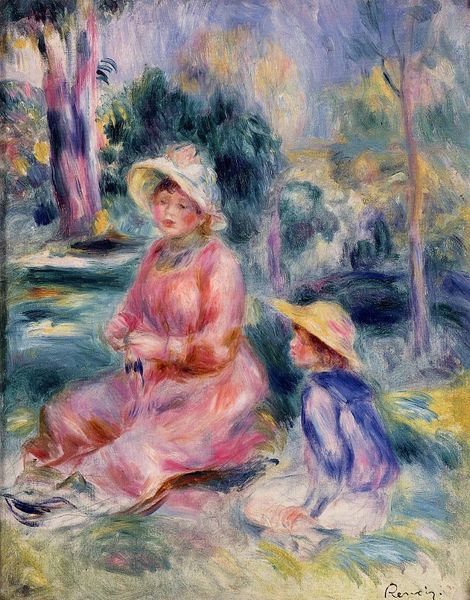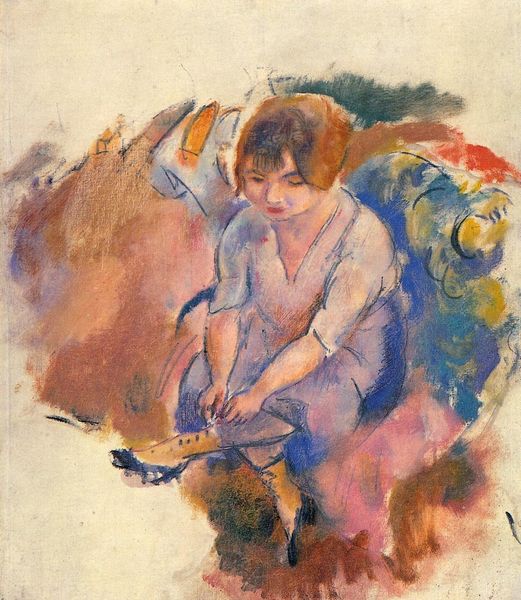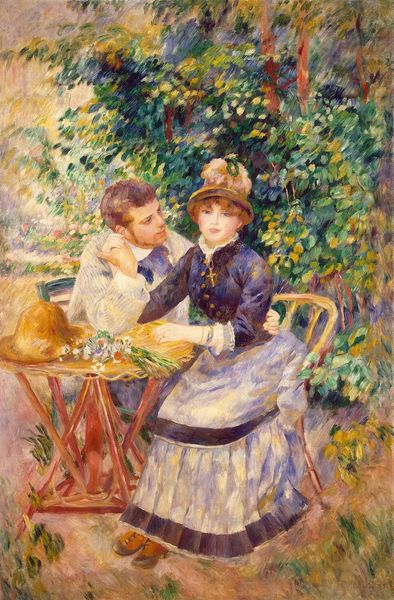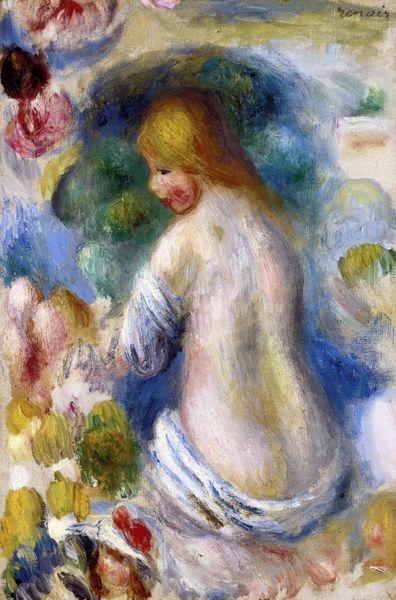
painting, oil-paint
#
portrait
#
gouache
#
painting
#
impressionism
#
oil-paint
#
landscape
#
figuration
#
oil painting
#
genre-painting
#
watercolor
#
realism
Copyright: Public domain
Editor: This is Renoir’s “Motherhood,” painted in 1886, and it looks like oil on canvas. I’m struck by how নরমাল it feels, showing such a commonplace act of feeding a baby. What do you make of it? Curator: Let's look at it through a materialist lens. Oil paint, readily available in tubes by this time, democratized painting. Consider the very *stuff* of this artwork – pigment mixed with oil, ground and applied to woven canvas. Renoir isn't depicting some idealized Madonna. He's depicting the everyday labor of motherhood. The red jacket she’s wearing: What would it have taken to produce it, what kind of industry does that signify? Editor: That’s a fascinating way to consider it. I was just seeing a sweet mother-child portrait! The dress looks handmade...does that imply a slower pace, less consumption perhaps? Curator: Exactly. Think about the social context. While industrialization was booming, so was the movement to depict the ‘real’. But here, what labour is he excluding? The labor of the mother, perhaps, idealized in paint. He's selling an image of tranquility produced from this kind of work. Do you find any element that might give clue of this other labour behind the idyll? Editor: Perhaps the cat! It adds a very homey vibe. It also subtly alludes to all those women tending house and kids back then. Thanks for opening my eyes! Curator: Yes, art reflects more than it reveals; by asking 'how was this made, and by whom'?, we dig up many cultural assumptions embedded within paintings.
Comments
No comments
Be the first to comment and join the conversation on the ultimate creative platform.

